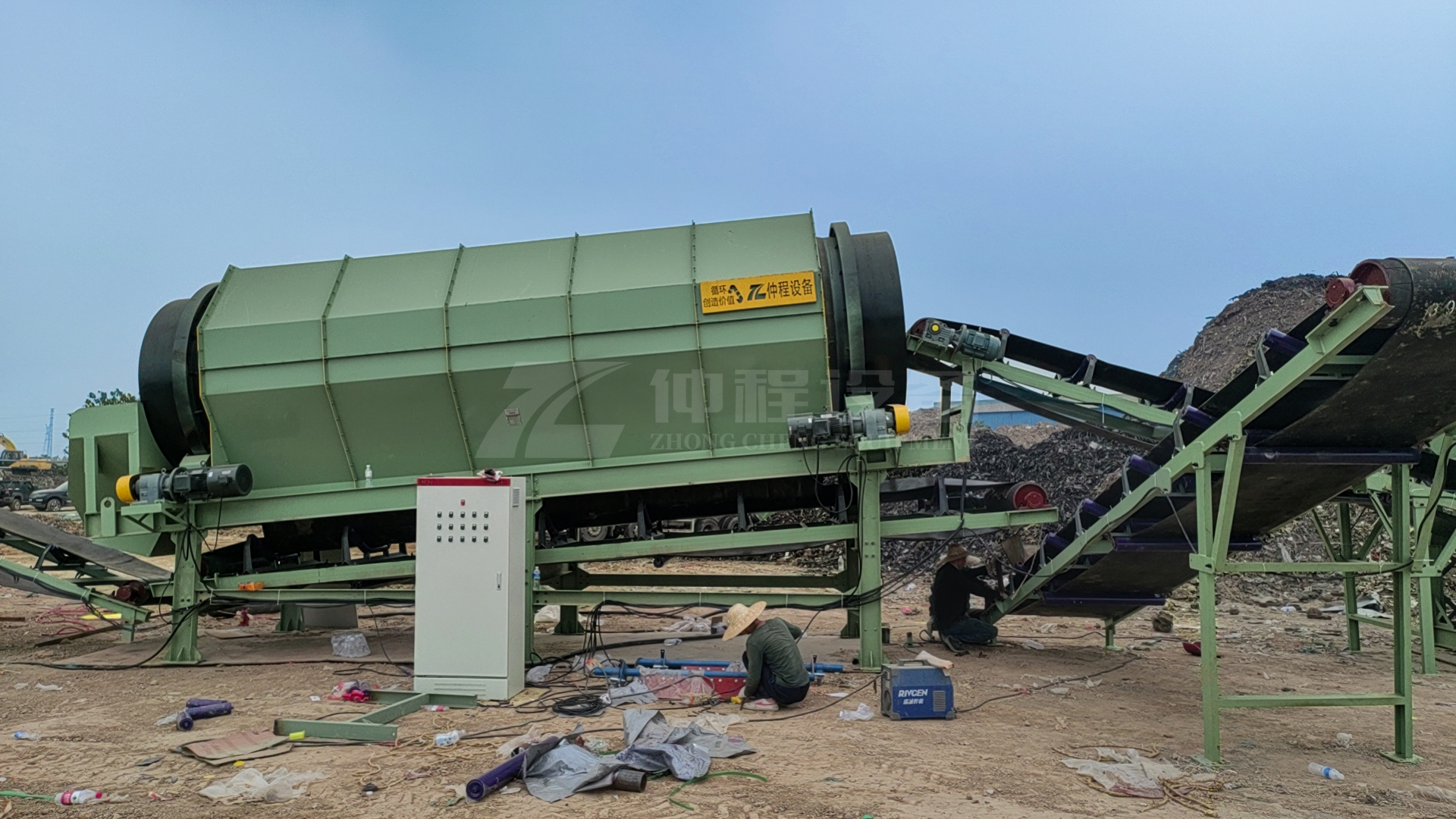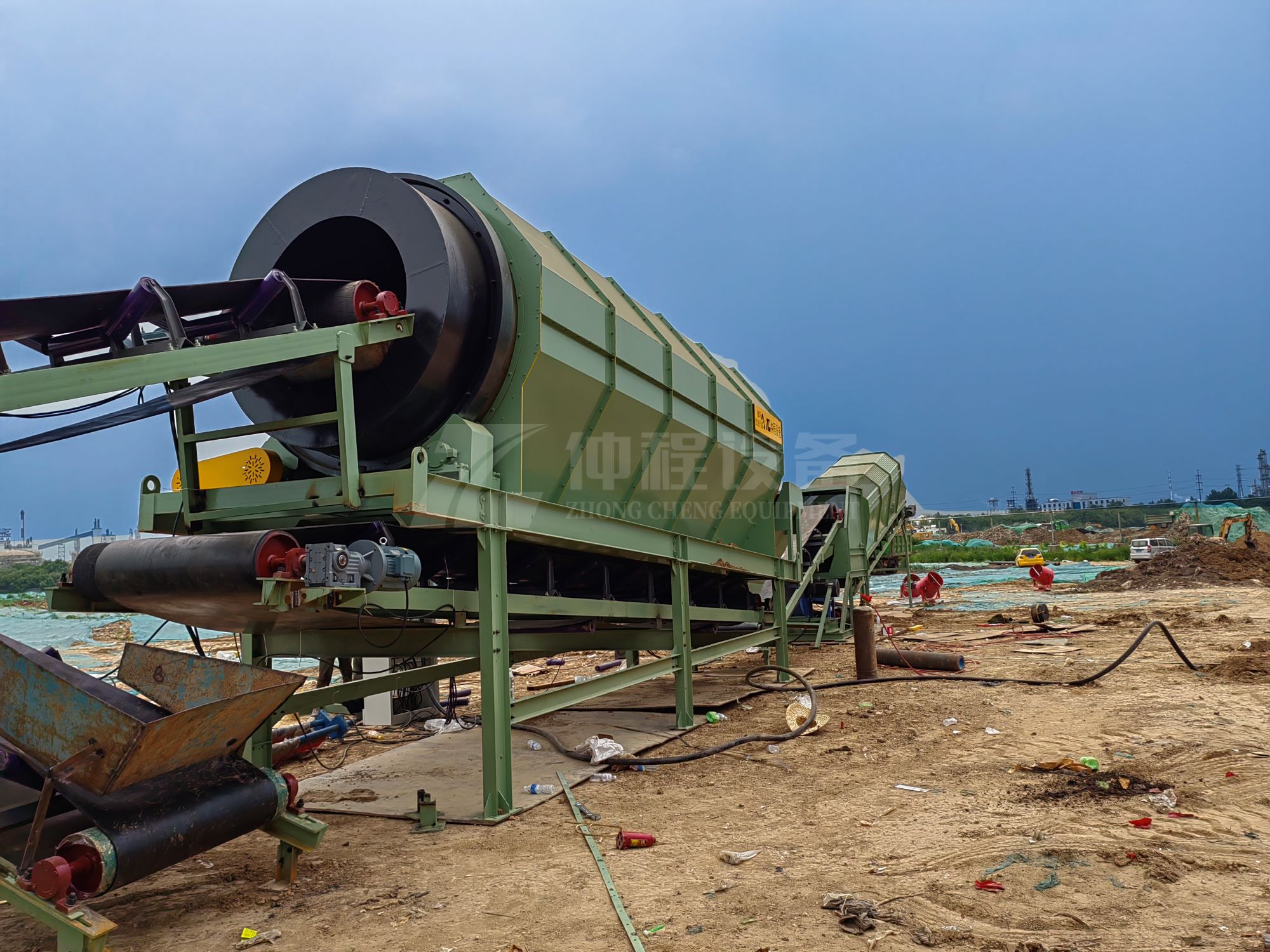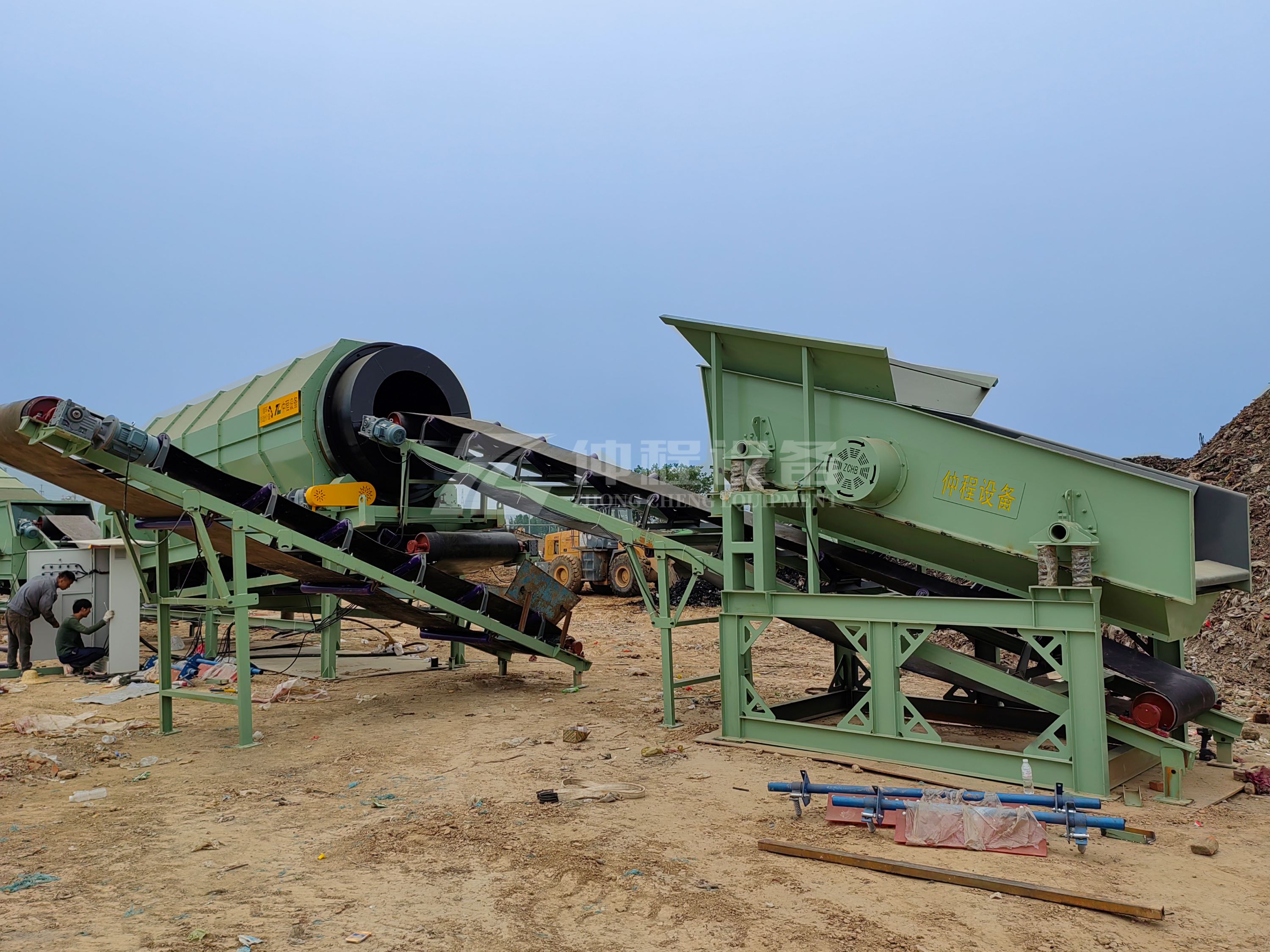The Role of Drum Screens in MSW Recycling Plants
In today's world, managing household waste is a critical issue as we strive for more sustainable and environmentally friendly waste management solutions. Recycling plays a pivotal role in reducing waste and conserving resources. At the heart of modern recycling operations are drum screens, which are revolutionizing how we process and separate materials in household waste recycling plants. This article explores the function, benefits, and impact of drum screens in improving recycling efficiency.
Understanding Drum Screens
A drum screen, also known as a trommel screen, is a cylindrical rotating screen used in various industries, including waste management. Its primary function is to separate materials based on size. The drum's surface is perforated with holes that allow smaller particles to pass through while retaining larger items inside the drum. This separation process is essential for efficiently sorting and processing materials in household waste recycling plants.

How Drum Screens Work
The drum screen operates using a simple yet effective mechanism. As the drum rotates, materials are fed into one end of the cylinder. The rotation causes the materials to tumble and roll, allowing smaller particles to fall through the perforations and larger items to progress along the drum. The size of the perforations can be adjusted based on the specific requirements of the recycling process, ensuring optimal separation of different materials.
Key Components of a Drum Screen:
- Drum Cylinder: The cylindrical structure that houses the materials and facilitates separation.
- Perforated Surface: Holes of varying sizes that allow particles to be sorted based on their dimensions.
- Drive System: Provides the rotational force necessary for the drum's operation.
- Infeed and Discharge: Points where materials enter and exit the drum.
The Role of Drum Screens in Household Waste Recycling
Drum screens are integral to household waste recycling plants, providing numerous benefits that enhance the efficiency and effectiveness of the recycling process.
1. Efficient Material Separation
One of the primary advantages of drum screens is their ability to efficiently separate materials based on size. This separation is crucial in recycling, as different materials often require distinct processing methods. Drum screens ensure that materials such as plastics, metals, and organic waste are accurately sorted, facilitating their proper handling and recycling.
For example, a household waste recycling plant may use drum screens to separate plastics of various sizes from organic waste. This ensures that each material stream is processed appropriately, maximizing the recycling potential of each component.
2. Enhanced Recycling Quality
The precise separation capabilities of drum screens contribute to higher-quality recycling outputs. By accurately sorting materials, drum screens help minimize contamination in recycling streams. This leads to cleaner and purer end products, making the recycling process more efficient and increasing the value of recycled materials.
High-quality recycling outputs are essential for producing recycled products that meet industry standards and consumer expectations. Drum screens play a vital role in ensuring that recycled materials are suitable for reuse in manufacturing and other applications.
3. Increased Processing Speed
Drum screens can handle large volumes of waste efficiently, significantly increasing the processing speed of household waste recycling plants. The continuous rotation and tumbling action of the drum allow for rapid separation of materials, reducing bottlenecks and improving overall plant productivity.
By accelerating the recycling process, drum screens enable recycling facilities to handle more waste in less time. This efficiency is crucial in meeting the growing demand for recycling services in urban areas where waste generation is high.
4. Reduced Labor Costs
Automating the separation process with drum screens reduces the need for manual labor in sorting materials. This not only lowers operational costs but also minimizes the risk of human error, ensuring consistent and accurate separation.
Reduced labor costs allow recycling plants to allocate resources to other essential areas, such as expanding recycling capabilities, implementing new technologies, and enhancing sustainability initiatives.

Implementing Drum Screens in Recycling Plants
Integrating drum screens into household waste recycling plants requires careful planning and consideration of several factors.
1. Assessing Plant Needs
Before implementing drum screens, recycling facilities should assess their specific needs and goals. This assessment includes evaluating the types of materials processed, the desired output quality, and the plant's overall capacity. Understanding these factors will guide the selection of the appropriate drum screen design and specifications.
2. Customizing Drum Screen Design
Drum screens come in various sizes and configurations, allowing customization to suit the unique requirements of each recycling plant. Factors such as drum diameter, length, and perforation size should be carefully selected based on the types of materials being processed and the desired separation outcomes.
3. Regular Maintenance and Upkeep
To ensure optimal performance, drum screens require regular maintenance and upkeep. This includes routine inspections, cleaning, and addressing any mechanical issues that may arise. Proper maintenance extends the lifespan of the equipment and ensures continuous and efficient operation.

Challenges and Solutions
While drum screens offer numerous benefits, they also present challenges that recycling plants must address to maintain efficient operations.
1. Material Jamming
Material jamming can occur if oversized items become lodged in the perforations, disrupting the separation process. To mitigate this issue, recycling plants can implement pre-screening measures to remove large items before they reach the drum screen.
Additionally, selecting drum screens with appropriately sized perforations can help prevent jamming and ensure smooth material flow through the drum.
2. Wear and Tear
Continuous operation of drum screens can lead to wear and tear over time. Recycling plants should invest in durable drum screens made from high-quality materials to withstand the rigors of daily use. Regular maintenance and timely replacement of worn components are essential to maintaining optimal performance.
Conclusion
Drum screens are vital components of household waste recycling plants, offering efficient and effective solutions for material separation. By enhancing recycling quality, increasing processing speed, and reducing labor costs, drum screens contribute to more sustainable waste management practices. As recycling becomes increasingly important in achieving environmental goals, drum screens will play a key role in optimizing recycling operations and supporting a circular economy. By implementing and maintaining drum screens in recycling facilities, we can maximize resource recovery and minimize the environmental impact of household waste.
-
 Trommel screenTrommel screen, also known as drum screens, are widely used in various industries for sorting and separating materials.Get Quote
Trommel screenTrommel screen, also known as drum screens, are widely used in various industries for sorting and separating materials.Get Quote -
 Crop straw double shaft shreddApplications:Biomass Energy Production: Shredded straw can be used as a feedstock for bioenergy plants to produce electricity or heat.Livestock Feed: Reduced-si...Get Quote
Crop straw double shaft shreddApplications:Biomass Energy Production: Shredded straw can be used as a feedstock for bioenergy plants to produce electricity or heat.Livestock Feed: Reduced-si...Get Quote -
 Zhongcheng Air Drum SeparatorAir drum separators effectively separate lightweight materials (e.g., plastics, paper) from heavier materials (e.g., metals, glass). This high efficiency is cru...Get Quote
Zhongcheng Air Drum SeparatorAir drum separators effectively separate lightweight materials (e.g., plastics, paper) from heavier materials (e.g., metals, glass). This high efficiency is cru...Get Quote
-
2024-08-07Tire double shaft shredderOperation:Feeding: Whole or pre-cut tires are fed into the shredder through an inlet hopper.Shredding: As the tires enter the shredding chamber, the rotating cu...
-
2023-01-12Waste FeederWaste feeder was specially designed to optimize municipal solid waste sorting systems. The Drum Feeder ensures that your sorting system, baler or shredder has a...
-
2023-01-11Trommel screenTrommel screen, also known as drum screens, are widely used in various industries for sorting and separating materials.
-
2024-07-09Recycling Balers-Safe,Easy-To-Use and affordableThe operating principle of a strapping machine primarily involves the following steps:1.Item Positioning:Firstly, the item to be strapped must be placed accurat...
-
2024-08-07Efficient Material Separation with Bounce ScreensThe ballistic separator is an important equipment with separation function designed for the sorting of inorganic particles in the coarsely crushed waste.



